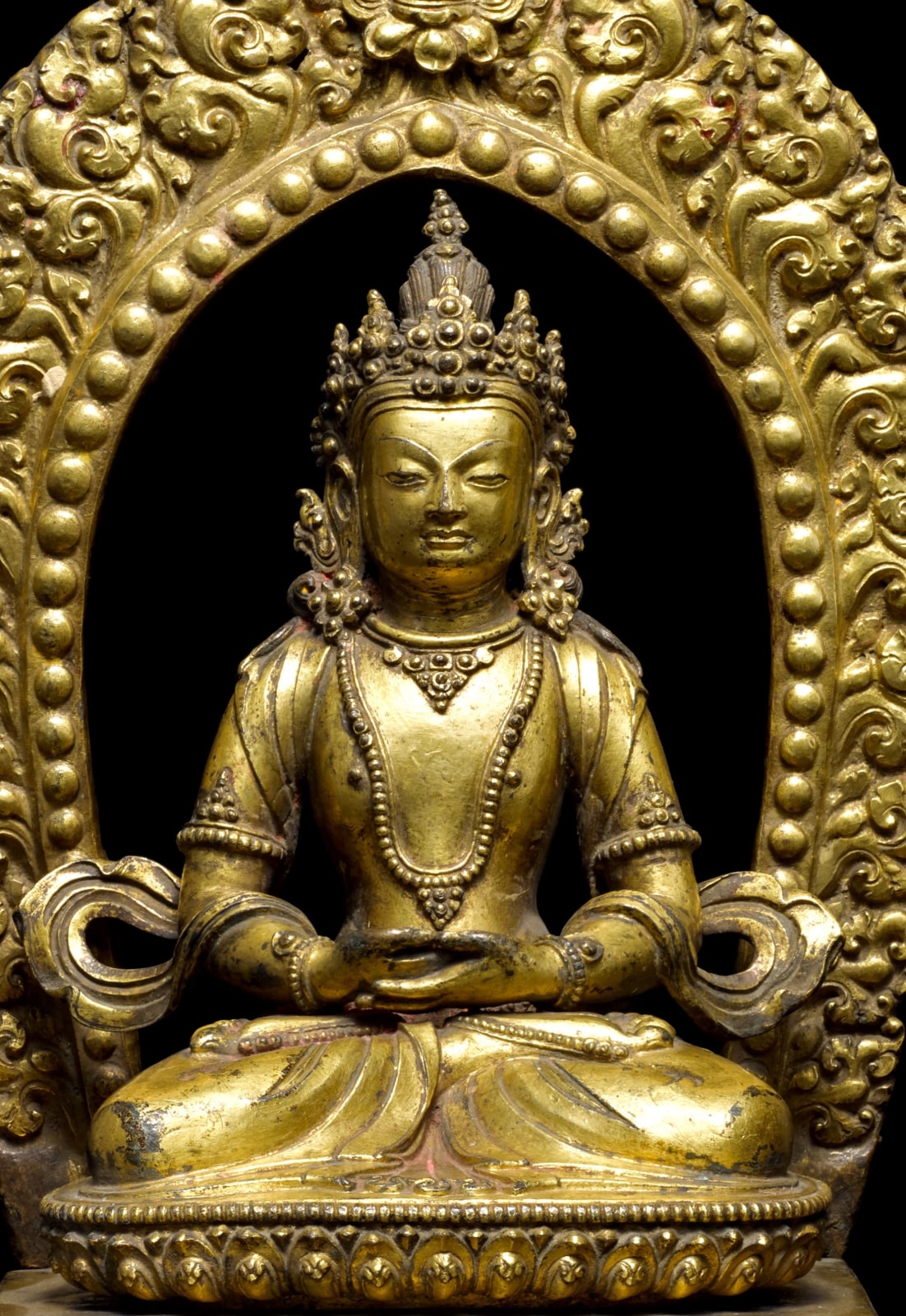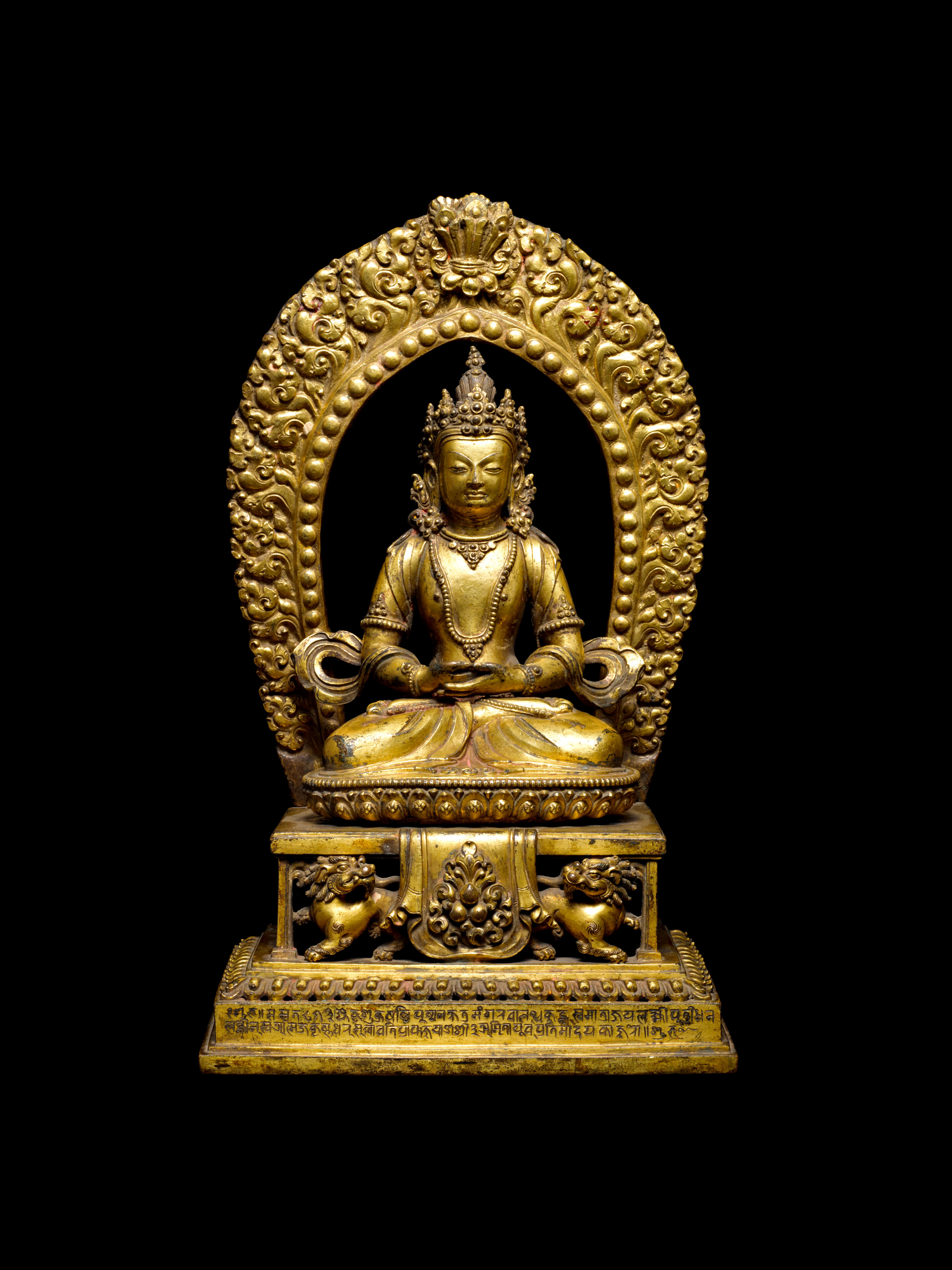
Provenance:
European Private Collection
American Private Collection
Published:
Helmut Uhlig, Das Bild des Buddha, Berlin, 1979, no. 94
Ulrich von Schroeder, Indo-Tibetan Bronzes, Hong Kong, 1981, p. 391, no. 107D
Dated by inscription and replete with masterful details, this superbly-cast enthroned Amitayus is a seminal piece of late Newari sculpture. With an authoritative expression, The Buddha of Boundless Life, bedecked with fine silks and jewelry, sits above an impressive rectangular throne and is guarded by lions who sniff the air for intruders. They flank a throne cover with a triratna medallion nestled within foliate scrolls of high relief.
Each lotus petal below has upturned tips and open work edges, the latter being a hallmark of later Newari casting. Below them is a two-line inscription, which reads:
"In the auspicious year of 853, on the sixth day of the bright half of the Jyeshṭha month, Pushya nakshatra, Tuesday [May-June 1733], mother Jaya Lakshmi together with her daughter Dhana Lakshmi commissioned this image of Sri Amitayu at the passing of her son Kṛishna Dhana into the [paradise of] Sukhavati. [May it be] auspicious."
With thanks to Dr. Gautama Vajracharya and Ian Alsop for their assistance with the translation
This inscription is typical of the Kathmandu valley, and there is no doubt the bronze was commissioned and made in Nepal. However, several elements are more in keeping with Buddhist bronzes produced in Tibet, Mongolia, and China. For example, the underside of the rectangular throne is incised with a visvavajra, which consecrates the attached figure immediately above. However, the practice of physically consecrating sculptures by inserting various materials and affixing a baseplate is traditionally not observed in the Kathmandu valley, whereas it is a requirement in Tibetan Buddhist sculpture, also adopted in Mongolia and China. Moreover, the treatment of the jewelry and silks is idiomatic of Imperial Chinese bronzes and thangkas of the Qing dynasty. Compare, for instance, a Qianlong period bronze of White Tara in the Qing Palace Collection published in Zangchuan Fojiao Zaoxiang, Hong Kong, 2008, p. 258, no. 247.
The Newars were superior and flexible metalworkers whose skills were employed far and wide. This awareness of broader tastes shown in a locally commissioned sculpture suggests that it was made by a caster versed in foreign styles either following the exchange of objects and expertise through a far-reaching network, or by firsthand experience having worked for a foreign atelier in Tibet, Mongolia, or China before returning to Nepal.
Of equal note is that the bronze appears to be one of the earliest representations of this type of image, with Amitayus seated on a rectangular throne with a pendent cover in the center. This image was made famous some 37 years later by the Qianlong Emperor, who commissioned 10,000 examples to commemorate his 70th birthday in 1780. Of superior quality, the present example would appear to be a seminal antecedent.

